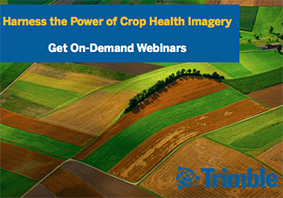We all know you can’t fight Mother Nature. But with the right weather and precipitation data flowing directly into your farm management software, maybe you don’t have to.
According to Elston Solberg, a Senior Agri-Coach with the AGRI-TREND network with over 25 years of agronomy experience, water drives everything on the farm. Whether you have too little or too much, water plays a key role in determining the success of each crop year. We just need a tool that helps us walk the line between wasting inputs in a year with too much or too little, and missing additional yield potential when precipitation levels are at or just above 30-year averages.
Well, we have that tool — we just don’t use it enough! What farmers need to remember, says Solberg, is that they can use soil moisture and historic precipitation levels to determine their water-driven yield potential. When you combine that with actual rainfall, farmers can make quick in-season decisions that will help make the most of very drop.
In this blog we will outline how farmers can use weather data — more specifically, soil moisture data, historic precipitation levels, and actual in-season precipitation — all to make data-driven in-season decisions to match yield goals to available moisture. The end result? Optimizing water and nutrient-use efficiency, as well as farm profits.
Why does weather data matter?
As farmers move further and further into precision management, a big part of this is being able to identify and target areas of your field that are underperforming. This is where understanding water becomes very helpful.
When you get down to the basics, there are two sources of water: soil water and precipitation, which Solberg says are equally important in determining crop yields. Yet, farmers typically put too high an emphasis on precipitation and don’t pay enough attention to the moisture already present in the soil.
According to Solberg, it takes 4 inches of water to just grow the plant (it's a bit more like 6 inches for corn). Every inch after that goes toward adding bushels, and how many depends on a number of other factors, such as crop type, soil texture and a crucial determining factor is how carefully the farmer is monitoring the crop and soil moisture.
Solberg explains that the goal is for farmers to identify yield opportunities and predict yield potential weeks before harvest, which allows them to 'pull triggers' — or take action such as adding inputs or reducing fungicide applications — during the season that can result in tremendous benefits to ROI.
Where water-driven yield potential really determines the future is when it intersects with variable-rate precision management. Many farmers are beginning to manage different parts of fields differently based on yield potentials supported by soil samples, tissue analysis and VR nutrition, fungicide, etc. Precision management is the new norm. And water-driven yield potential will play a vital role in the widespread adoption of precision management strategies.
How do I get started?
-
Determine historic rainfall amounts for the growing season.
-
Determine crop-available water in the soil.
-
Calculate water-driven yield potential: Moisture Driven Yield Potential = Soil Moisture + Historic In-season Precipitation = Total Potential Moisture minus 4” for the plant (6” for corn) = X leftover to make bushels depending on crop, soil texture and grower's interest and ability to closely monitor crop.
-
Measure rainfall with a rain gauge or start playing with weather stations – they’re cheap, reliable and telematics is not the problem it used to be. Larger farms may need several stations. Trimble Ag Software’s Ag Premium Weather provides accumulated rainfall plus the historical average.
-
Adjust inputs based on how well water-driven yield potential is tracking to actual precipitation.
For more information, check out this free webinar where Solberg takes a deeper dive into this important topic. If you'd like to be notified about other free resources, subscribe to our Precision Ag Insider newsletter today.
.jpg)

